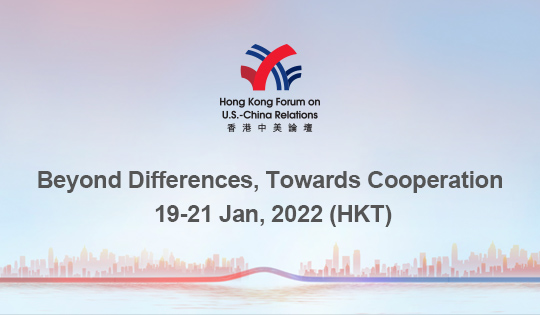The 21st ASEAN Summit closed in Phnom Penh on November 20th after achieving breakthroughs in regional cooperation, such as the start of talks on the Regional Comprehensive Economic Partnership among the 16 participating nations, and the decision by China, Japan and South Korea to begin trilateral negotiations on their own free trade area.
These moves have been widely regarded as efforts to work against the Trans-Pacific Strategic Economic Partnership, which was masterminded by the United States to facilitate its return to Asia and execute a strategy to contain China. This brings up two questions for us to ponder.. First, if the US’ return to Asia is aimed at containing China, the Asia-pacific alliance system would have been a ready tool for the United States to exploit. Why then has it been the only country in the west and south Pacific region that has been excluded from the RCEP, while all of its allies and even China and India have been brought in? Second, were the framework to work against the TPP, why would China have taken a core position in the RCEP?
To answer these two questions, it is necessary for us to look back at the cooperation between the East Asian nations over the last 15 years. Only through such a review can we come to pinpoint the contradictions. In 1997 when the ASEAN leaders met in a summit to identify risk control and prevention measures through regional cooperation, leaders from China, Japan and South Korea were invited to attend as nonvoting delegates. This laid the foundation for the rudimentary ‘ASEAN plus China, Japan and South Korea’ mechanism that later evolved into the ‘ASEAN Plus Three’ framework and finally has grown into the ‘dominating channel of regional cooperation’ firmly supported by China. Basically, the ASEAN Plus Three framework works through two mechanisms: the currency swap arrangement fixed in the Chiang Mai Initiative, and the ASEAN Free Trade Area centered around ASEAN Plus One. Both have seen positive developments thus far. At its meeting in Vientiane near the end of 2004, the ASEAN Plus Three decided on two major issues: creation of the East Asia Community as its general objective, and inauguration of the East Asia Summit, both decisions that immediately aroused the alarm of the United States that had always ‘benignly overlooked’ moves by this regional body. Some economists such as Fred Bergsten decried the moves for splitting the TPP, while some US congressmen and politicians cited them as contradicting the Asia-pacific alliance system of the United States, arguing that incorporation of the first island chain lying in the front of the Asia-pacific alliance system into the East Asia Community would totally change the security map of this region. This is why the United States came to point out in 2005 that the proposed East Asia Community is ‘deficient in democracy.’ The Japanese Foreign Ministry responded with a new draft – the so-called Ten Plus Six proposal, hoping to inject some democratic elements into the body by bringing Australia, Singapore and India. Obviously, this proposal was a negation of the popular belief that the United States stands for democracy. In reaction, the United States declared during the following APEC meeting that it would develop a package partnership with the ASEAN within 10 years. In early 2006, the Japanese government under Junichiro Koizumi unveiled the strategy of ‘quick action on the ASEAN, containment of China, the United States and South Korea, and creation of the de facto East Asia Community.’ It also completed economic partnership agreements with ASEAN nations five years ahead of schedule to seize marine fortresses of strategic importance. During the 2006 APEC meeting, the Bush administration brought to conclusion a number of bilateral free trade area agreements between any two parties within the APEC framework, but refused the Japan-US free trade area proposed by Japan. In 2007, Bush came up with the concept of a Pacific-rim free trade area bridging Chile, New Zealand, Singapore and Brunei, or the Pacific Four or P4 as came to be known later. The TPP concept raised by Obama is nothing new, but rather a development and extension of Bush’s conception.
So far as its coverage is concerned, the RCEP we are talking about today is identical to the Ten Plus Six scheme advocated by Japan. The Japanese have always kept to the terms of their own creation, although they have now added to it the suffix ‘FTA in broad sense.’ The key here is the Japanese interpretation of the terms Ten Plus Six and ASEAN Plus Three: the ‘Ten’ in Ten Plus Six refers to 10 countries not bound up together as in the case of the 10 ASEAN members, an understanding that has been continued in the RCEP. In order to complete the framework as soon as possible, the three latecomers have also been counted as exceptions, further reinforcing the Japanese interpretation.
What calls for notice here is that Indonesia came up with the RCEP concept last year, right when the EPA agreement between Japan and India took effect. As a result, the RCEP framework would work, in terms of structure, on the principal axle formed by Japan, the ASEAN and India, while all other countries concerned would only serve in the ASEAN Plus One sub-axles. For its part, will the ASEAN continue to believe in its leading role after the start of FTA talks between China, Japan and South Korea? It seems unnecessary to give answers to the two questions raised earlier in this article. What truly calls for our brainstorming is how to facilitate trans-Pacific regional cooperation under a system covering 18 East Asian countries and how to coordinate it with cooperation within the APEC framework. Positive results from such brainstorming will provide, perhaps, the basic conditions for keeping the economic vitality of the Asia-Pacific region during its course of opening-up to the rest of the world and harmonization with the pace of globalization.
Liu Junhong, researcher at Chinese Institute of Contemporary International Relations

